The discovery of a new sedimentary basin: offshore Raukumara, East Coast, North Island, New Zealand
Chris Uruski A , Callum Kennedy B , Rupert Sutherland C , Vaughan Stagpoole C and Stuart Henrys CA GNS Science, NZ
B Crown Minerals Group, NZ
C GNS Science, NZ
The APPEA Journal 48(1) 53-68 https://doi.org/10.1071/AJ07006
Published: 2008
Abstract
The East Coast of North Island, New Zealand, is the site of subduction of the Pacific below the Australian plate, and, consequently, much of the basin is highly deformed. An exception is the Raukumara Sub-basin, which forms the northern end of the East Coast Basin and is relatively undeformed. It occupies a marine plain that extends to the north-northeast from the northern coast of the Raukumara Peninsula, reaching water depths of about 3,000 m, although much of the sub-basin lies within the 2,000 m isobath. The sub-basin is about 100 km across and has a roughly triangular plan, bounded by an east-west fault system in the south. It extends about 300 km to the northeast and is bounded to the east by the East Cape subduction ridge and to the west by the volcanic Kermadec Ridge. The northern seismic lines reveal a thickness of around 8 km increasing to 12–13 km in the south. Its stratigraphy consists of a fairly uniformly bedded basal section and an upper, more variable unit separated by a wedge of chaotically bedded material. In the absence of direct evidence from wells and samples, analogies are drawn with onshore geology, where older marine Cretaceous and Paleogene units are separated from a Neogene succession by an allochthonous series of thrust slices emplaced around the time of initiation of the modern plate boundary.
The Raukumara Sub-basin is not easily classified. Its location is apparently that of a fore-arc basin along an ocean-to-ocean collision zone, although its sedimentary fill must have been derived chiefly from erosion of the New Zealand land mass. Its relative lack of deformation introduces questions about basin formation and petroleum potential. Although no commercial discoveries have been made in the East Coast Basin, known source rocks are of marine origin and are commonly oil prone, so there is good potential for oil as well as gas in the basin. New seismic data confirm the extent of the sub-basin and its considerable sedimentary thickness. The presence of potential trapping structures and direct hydrocarbon indicators suggest that the Raukumara Sub-basin may contain large volumes of oil and gas.
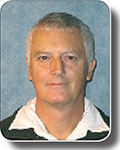
Chris Uruski is a petroleum geoscientist at the Institute of Geological and Nuclear Sciences in New Zealand where he has worked since 1987. His main area of expertise is seismic interpretation and he is a lead author of two major GNS regional basin studies publications; the Western Southland and the East Coast monographs. He holds a BSc in geology from the University College of Wales, Aberystwyth, and has worked at Aberystwyth and Durham Universities and for ECL in various parts of the world before arriving in New Zealand. He was the lead author of major reports on the deepwater Taranaki and Northland basins. As well as conducting government-funded research, Chris has worked on contract for many, if not most, of the exploration companies in New Zealand and he believes that New Zealand’s deepwater sedimentary basins contain large volumes of oil and gas. c.uruski@gns.cri.nz |
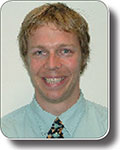
Callum Kennedy graduated with a post-graduate diploma in geology from Victoria University of Wellington, where he focussed on structural geology and geochemistry of the Alpine Schist. He now works as a geoscientist for the New Zealand government, where he is responsible for seismic acquisition. Callum.Kennedy@med.govt.nz |
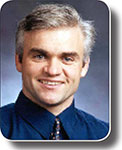
Rupert Sutherland has a natural sciences degree from Cambridge University and a PhD from Otago University. He leads the tectonics research program at GNS Science and has published extensively on the past and present tectonics of New Zealand and the South Pacific. v.stagpoole@gns.cri.nz |
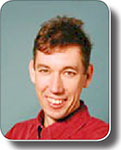
Vaughan Stagpoole is a senior scientist at GNS Science. Dr Stagpoole received his PhD in Geology from Victoria University of Wellington in 1997. He specialises in the geophysics of petroleum basins and has published extensively on basin modelling. Dr Stagpoole is the research program leader for the GNS ocean resources program and is the GNS project manager for the NZ Continental Shelf submission to the UN. Member: AAPG, the New Zealand Geophysical Society, and the Geological Society of New Zealand. r.sutherland@gns.cri.nz |
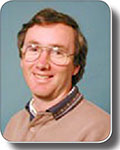
Stuart Henrys is a senior scientist at GNS Science in New Zealand. HE received his PhD in Geology from Auckland University in 1987. He then worked in seismic processing until 1989 when he went to Rice University, Houston, as a research scientist. In 1992 he returned to New Zealand to take up a two-year post-doctoral position at Victoria University of Wellington. Since 1994 he has been with GNS Science. Dr Henrys specialises in active source seismic studies associated with the active plate boundary through NZ, seismic stratigraphy in the Ross Sea, Antarctica, and geophysical studies of gas hydrates in marine sediments. Member SEG, AGU, New Zealand Geophysical Society, and the Geological Society of New Zealand. s.henrys@gns.cri.nz |


